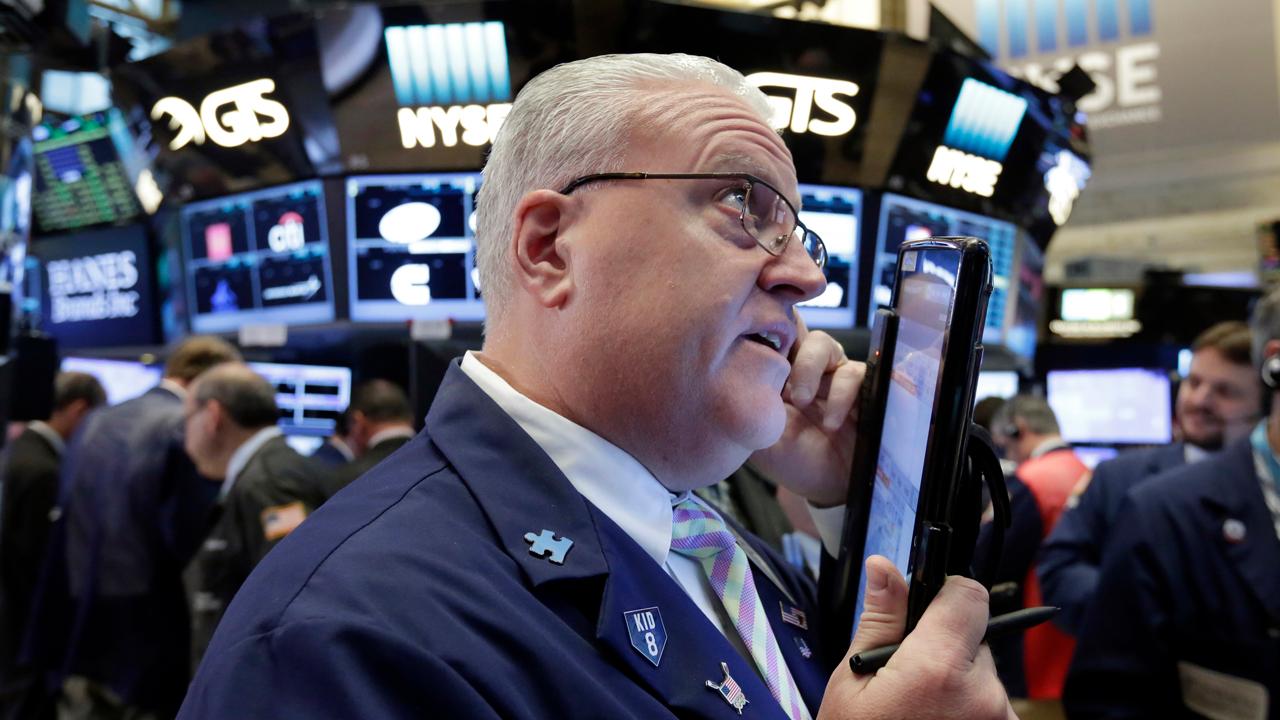The stock market will remain glued to the inflation story
The past week's stock market price action was as chaotic as the fast-moving narratives it followed, and that's likely to continue. In early February, the inflation narrative moved front and center on fears that rising wage pressures would feed broader price rises and force the Fed to tighten more aggressively than expected. The narrative was born from the January jobs report which showed a jump in hourly earnings growth. The report triggered a selloff that turned into the first correction--defined as a 10% drop or more--in about two year. But on Friday, the February jobs report showed a robust 313,000 jobs created, but not much wage growth, sparking a relief rally that sent the market sharply higher. Concerns about a potential trade war have also shadowed the market, but faded by the end of the week after the steel and aluminum tariffs that President Donald Trump signed Thursday exempted Canada and Mexico and left room for others to negotiate exclusions, lifting fears of immediate retaliation and signaled willingness by the White House to exempt other partners. The S&P 500 closed up 1.7% and booked a 3.5% gain over the week, while the Nasdaq Composite rallied 1.8% and closed at a record high. "Market reaction to the jobs report was not surprising, as the wage growth was benign, but we are still likely to see more inflation pressure in future," said Liz Ann Sonders, chief investment strategist at Charles Schwab. "The Federal Reserve is justified raising rates three or four times this year." Fed funds futures are fully pricing in three rate increases this year and about a 35% chance of a fourth rate increase by the end of December, according to CME Group's FedWatch Tool. Despite fears of significant increase in average hourly earnings given low levels of unemployment, wage growth has been weak throughout the recovery. Sonders said weakness in wage growth was largely due to structural reasons such as aging demographics and industry concentration.
"Median wage growth is not as bad as the average number, which gets influenced by facts like an increase in the number of low-paying jobs. However, it's not as robust as you'd expect in late stages of recovery," Sonders said. On Tuesday, investors will have a chance to react to the next chapter in the inflation story, the February consumer-price index. Economists surveyed by MarketWatch are penciling in a 0.2% monthly rise in the CPI and in the core figure, which strips out volatile energy and food prices. "For the moment, the jobs report eased concern that the Fed will be more aggressive. But markets do overreact to noise and a strong CPI print can reinstate concerns about inflation," said Erin Browne, head of asset allocation at UBS Asset Management. And then there's trade. "Fear of a trade war and negative impact on economic growth have certainly eased and market participants are getting comfortable with Trump using tariffs as negotiating tactics," said Browne. But risks of a potential trade war are still there, reminds Sonders and news of retaliation could yet inject more turbulence. "In general, markets are not fans of tariffs. Last week markets were pretty efficient to price in such a scenario, even though for now they are choosing not to focus on tariffs," Sonders said. Investors should take solace in a pickup in volatility, which had a dampening effect on overall sentiment, according to Sonders. "The kind of price action we've had so far this year, including the 10% correction is better than a melt-up scenario. Market returns tend to be good during the last leg of the cycle," she said. Next week a flurry of economic releases may influence markets. Besides the CPI on Tuesday, retail sales are scheduled for Wednesday at 8:30 a.m. The Philly Fed business outlook is due on Thursday, as is the Empire State manufacturing index and import and export prices. Housing starts and industrial production are due on Friday. Fed speakers will enter the quiet period ahead of the policy meeting on March 21.




















